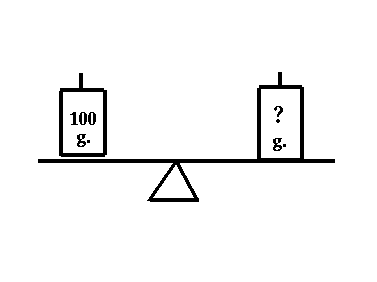Unit Of Measurement Of Force
Definitions for Forcefulness:
1) Force is a push or pull
2) Force is the capacity to do work or crusade concrete change
3) Force= Mass times dispatch (F = ma)
iv) A force is that which changes or tends to change the state of rest or motion of a body.
Examples:
For simplicity sake, all forces (interactions) between objects can be placed into ii wide categories: contact forces, and forces resulting from activity-at-a-altitude.
Contact Forces include: frictional forces, buoyant forces, normal forces, and air resistance forces
Activeness-at-a-distance forces include: gravitation, electrostatic and magnetic forces.
Measuring Forcefulness:
Force is measured using either the English language Arrangement of Measurements or the International System of Units (SI).
Common Units of Force
--->>SI: Newton (N) 1 N = 0.225 lb;
One Newton (Northward) of force is divers as the amount of force needed to advance one kilogram (kg) of mass at a rate of 1 meter per 2d squared (1000/s2).
i Newton = 1 kg m/sec2 (A kilogram is the amount of weight at which i N of force will accelerate at a rate of ane m/s2.)
--->>English Organization: Pound (LB) ane LB = four.448 N
In English language system of measurements, a slug is the amount of mass that 1 pound of forcefulness will advance at 1 ft/s2, and a pound mass is the amount of mass that one LB of strength will advance at 32 feet/s2.
Describing a Strength:
A forcefulness is a vector quantity. A vector quantity is a quantity which has both magnitude and direction. To fully describe the force acting upon an object, you must describe both its magnitude and direction. Thus, 10 Newtons of force is not a complete description of the force acting on an object. ten Newtons, downwards is a complete clarification of the strength interim upon an object.
(Note: What is the difference between vector and scalar quantities? A vector has both strength and direction, a scalar quantity can be described using only 1 quantity, magnitude. Examples of scalar quantities are: time, energy and volume since they but represent magnitude and no direction.
What is the Difference between Mass and Weight?
Shown beneath are two types of scales commonly used in the classroom --a spring calibration (left) and a uncomplicated balance beam scale on the right.
On earth the spring calibration reads 100g with an unknown mass attached at the bottom. To residuum the scale on the right a 100g mass was likewise needed.
If we were to take both scales to the moon, what would the the leap scale read? How much mass would exist needed to balance the 100g mass on the residuum beam? Can you lot explain your answer? For more details see the Mass and Weight Page.
| | | |
| spring scale | unproblematic balance calibration |
What does applying a Forcefulness practice?
Forcefulness causes acceleration.
Newton'south 2d Law states that: the acceleration (a) of an object is directly proportional to the forcefulness (F) applied, and inversely proportional to the object's mass (m).
That ways that the more strength yous use to an object, the greater the dispatch. And, the more mass the object has, the lower the dispatch.
Newton's Second Law tin can be written in equation form: F = ma.
For falling objects we can write F=mg where g is the dispatch due to gravity. The force of gravity is what causes free falling objects to accelerate. These objects all advance at the aforementioned rate of ix.viii meters/sec^ii
What is Friction?
Friction is the force that opposes the relative motion or tendency to such motion of 2 bodies in contact. If nosotros try to push button a block of wood across a table, there are two opposing forces that human activity: the force associated with the push, and a force that is associated with the friction which acts in the opposite management. As frictional forces are decreased (for instance, by placing oil on the table) the object moves farther and farther earlier stopping. This demonstrates Galileo's police of inertia which states: an object in a state of move possesses an ``inertia'' that causes it to remain in that state of motion unless an external force acts on it.
Try these do!
Please enter your reply in the space provided:2) What is the mass of an object that has a weight of 115 N on the Moon? The gravity of the Moon is i/half-dozen of g (which is 9.8 yard/s2).
iii) An object in free fall will advance at a rate of :
Unit Of Measurement Of Force,
Source: https://www.edinformatics.com/math_science/what-is-force.html
Posted by: smileytheighty.blogspot.com




0 Response to "Unit Of Measurement Of Force"
Post a Comment